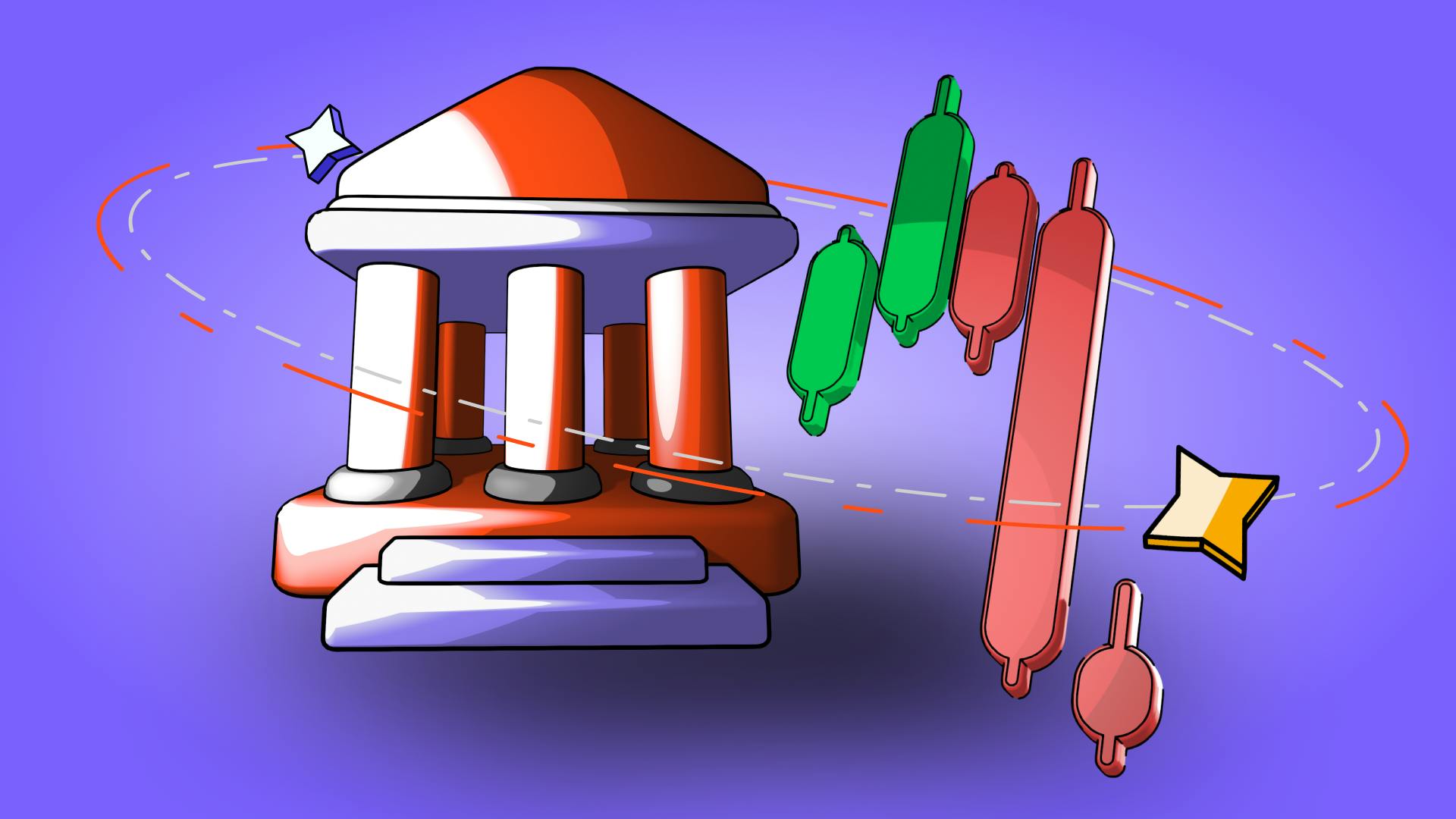Crypto Arbitrage: Techniques and Tools for Traders
December 5, 2025

by Coinmetro Editorial Team
December 5, 2025
Crypto arbitrage involves taking advantage of the incremental price differences for the same cryptocurrency across different exchanges. Traders buy a cryptocurrency at a lower price on one exchange and sell it at a higher price on another. The price differences are typically small, so trades must be executed swiftly to capture the profit. This practice requires advanced knowledge, real-time data, and quick execution, making it suitable mostly for experienced traders.
Arbitrage plays a crucial role in the cryptocurrency market. It helps in price discovery and market efficiency by reducing price differences across exchanges. Arbitrageurs add liquidity to the market, making it easier for other traders to buy and sell cryptocurrencies. By exploiting inefficiencies, arbitrageurs help stabilize the market, ensuring prices remain aligned across different platforms.
What you will learn from this blog:
- Understanding crypto arbitrage
- Techniques for crypto arbitrage
- Tools for crypto arbitrage
- Risks and challenges
In traditional finance, arbitrage involves buying and selling the same asset in different markets to profit from price discrepancies. For example, a trader might buy a stock on one exchange where the price is lower and sell it on another exchange where the price is higher. This practice exploits inefficiencies in the market, ensuring prices remain consistent across different platforms. Traditional arbitrage often requires significant capital, advanced trading strategies, and real-time market data to execute successfully.
While the basic principle of arbitrage remains the same in both traditional finance and cryptocurrency markets, there are key differences:
Market Structure: Traditional financial markets are highly regulated, with established rules and oversight, whereas crypto markets can be more fragmented and less regulated.
Speed of Transactions: Crypto arbitrage requires much faster execution due to the high volatility and rapid price changes in cryptocurrency markets.
Accessibility: Crypto arbitrage can be more accessible to individual traders due to lower barriers to entry compared to traditional arbitrage, which often requires significant capital and access to specific trading platforms.
Technology: Crypto arbitrage relies heavily on technology, including automated trading bots and API integrations, to quickly identify price discrepancies and execute trades automatically to capture profits.
Spatial arbitrage: It involves buying a cryptocurrency on one exchange where the price is lower and selling it on another exchange where the price is higher. This type of arbitrage is straightforward but requires accounts on multiple exchanges and quick execution to capture small price differences before they disappear.
Triangular arbitrage: It involves three trades - exchanging one cryptocurrency for another, then trading that second cryptocurrency for a third one, and finally trading the third cryptocurrency back to the first. This method exploits price differences between three pairs of cryptocurrencies, often within the same exchange, to generate a profit.
Statistical arbitrage: Uses mathematical models and algorithms to identify and exploit price inefficiencies in the market. Traders use historical data and statistical methods to predict future price movements and execute trades accordingly. This type of arbitrage requires advanced technical knowledge and sophisticated software to analyze market data and execute trades rapidly.
Set up accounts on multiple exchanges: Ensure you have verified accounts on all the exchanges where you plan to trade.
Deposit funds: Deposit the necessary amount of cryptocurrency or fiat on the exchanges.
Monitor prices: Continuously monitor prices using price tracking tools or automated bots.
Execute the trade: Buy the cryptocurrency on the exchange with the lower price and immediately transfer and sell it on the exchange with the higher price. To ensure swift arbitrage trading, some traders maintain reserves of the traded cryptocurrency in accounts across several exchanges. This approach allows for instant selling, eliminating the need to transfer funds between wallets and saving valuable time.
Withdraw profits: Transfer your profits to a secure wallet or reinvest in further arbitrage opportunities.
Example 1: You notice that Bitcoin is trading at $30,000 on Exchange A and $30,300 on Exchange B. You buy 1 Bitcoin on Exchange A and sell it on Exchange B, making a $300 profit (minus transaction fees).
Example 2: Ethereum is priced at $2,000 on Exchange X and $2,020 on Exchange Y. You buy 10 ETH on Exchange X and sell them on Exchange Y, netting a $200 profit before fees.
Triangular arbitrage involves exploiting price differences between three cryptocurrencies on a single exchange. This type of arbitrage takes advantage of discrepancies in the exchange rates between three pairs of cryptocurrencies:
Identify three currencies: Select three cryptocurrencies, such as BTC, ETH, and USDT.
Calculate the implied cross rate: Determine the exchange rates between the three pairs (e.g., BTC/ETH, ETH/USDT, BTC/USDT).
Compare rates: Compare the implied cross rate with the actual cross rate to identify any discrepancies.
Execute trades: Conduct three trades in a sequence to convert the first cryptocurrency into the second, the second into the third, and the third back into the first, capturing any profit from the discrepancies.
You start with 1 BTC on an exchange, trade BTC for ETH by converting 1 BTC to 15 ETH, then trade ETH for USDT by converting 15 ETH to 30,000 USDT, and finally trade USDT back to BTC by converting 30,000 USDT to 1.01 BTC, capturing a profit of 0.01 BTC (minus fees).
Statistical arbitrage involves using mathematical models and statistical methods to identify and exploit price inefficiencies in the market. This type of arbitrage relies on historical data and predictive algorithms to forecast price movements and execute trades, utilizing tools for statistical analysis such as:
Python and R: Programming languages commonly used for statistical analysis and developing trading algorithms.
QuantConnect and Quantlib: Platforms offering tools for quantitative trading strategies and backtesting.
MATLAB: A powerful tool for statistical analysis and algorithm development in trading.
A trader uses a mean reversion strategy, which assumes that the price of a cryptocurrency will revert to its historical average over time. By analyzing historical price data, the trader identifies an overbought condition and sells the cryptocurrency, expecting the price to drop back to its average. Conversely, the trader buys the cryptocurrency in an oversold condition, anticipating a price increase.
Unlike traditional arbitrage, which typically involves quick, almost instant trades to exploit price differences, statistical arbitrage can take longer periods to play out. It relies on the assumption that prices will eventually revert to their historical norms, which may require holding positions for days, weeks, or even months. This approach combines elements of both arbitrage and longer-term trading strategies, making it distinct from the rapid transactions seen in traditional arbitrage.
By leveraging these tools, traders can enhance their arbitrage strategies, ensure swift execution of trades, and maximize profits while minimizing risks:
Arbitrage bots: Arbitrage bots automate the process of identifying and executing arbitrage opportunities. These bots continuously scan multiple exchanges for price discrepancies and execute trades swiftly to capture profits.
Arbitrage calculators: Help traders calculate potential profits by identifying price differences between exchanges. These tools are essential for fast calculations and determining if an arbitrage opportunity is worth pursuing after accounting for transaction fees and other costs.
Exchange API integration: Crucial for real-time data access and automated trading. APIs (Application Programming Interfaces) allow trading bots and calculators to connect with exchanges, fetch live data, and execute trades instantly.
Did you know? Coinmetro integrated with CCXT - an industry leading software library
This integration allows users to connect their Coinmetro accounts to CCXT applications, enhancing API functionality and offering more tools and flexibility for trading strategies. This development underscores our commitment to providing a seamless trading experience and paves the way for new partnerships, expanding Coinmetro's reach and influence in the crypto market. We will continue improving our API accessibility, performance, and support with future updates.
Market volatility can significantly impact crypto arbitrage opportunities. High volatility leads to rapid price changes, which can create arbitrage opportunities but also makes it challenging to execute trades quickly enough to capture these discrepancies. The fast price movements can result in trades being executed at less favorable prices than anticipated, reducing or even negating profits.
To mitigate the risks associated with market volatility, traders can:
Use automated trading bots: Bots can execute trades instantly, reducing the lag time that manual trading may involve.
Set stop-loss orders: These orders automatically sell a cryptocurrency if its price drops to a certain level, limiting potential losses.
Diversify trading strategies: Using a mix of arbitrage strategies can help balance out the risks associated with any single method.
Liquidity refers to how quickly and easily an asset can be bought or sold without affecting its price. Low liquidity can hinder arbitrage trades because it may be difficult to execute large trades quickly without causing significant price movements. This can result in slippage, where the actual execution price differs from the expected price, reducing arbitrage profits.
To manage liquidity risk, traders can:
Choose high-liquidity exchanges: Prioritize trading on exchanges with high trading volumes and deep order books.
Monitor trading volumes: Regularly check the liquidity of the assets and exchanges they trade on.
Use liquidity pools: Engage with decentralized finance (DeFi) platforms that offer liquidity pools to facilitate smoother transactions.
The regulatory environment for cryptocurrencies varies widely by country and is continually evolving. Regulations can affect crypto transactions' legality, taxation, and reporting requirements, which can impact arbitrage opportunities. Regulatory uncertainty can create risks for arbitrage traders, as sudden regulation changes can disrupt trading strategies and profitabilityPotential regulatory changes, such as stricter anti-money laundering (AML) laws, can impact how easily funds can be moved between exchanges, affecting the feasibility of arbitrage. Traders must stay informed about regulatory developments in their jurisdictions to adapt their strategies accordingly. Regularly reviewing legal advisories and consulting with legal experts can help manage these risks.
Technology plays a crucial role in crypto arbitrage. High-speed internet connections, reliable trading platforms, and efficient APIs are essential for executing trades swiftly. Any technical glitches can lead to missed opportunities or financial losses.
Common technical issues include:
Exchange downtime: Exchanges may experience outages or maintenance periods, disrupting trading activities. Diversify trading across multiple exchanges to reduce dependency on any single platform.
API failures: APIs may fail or provide inaccurate data. Use reliable and well-supported APIs, and have backup APIs to switch to in case of failure.
Latency issues: Delays in trade execution can reduce profitability. Optimize internet connectivity and use low-latency trading platforms.
Crypto arbitrage leverages price discrepancies across exchanges to generate profits. It requires advanced knowledge, real-time data, and swift execution, making it suitable for experienced traders. This strategy helps improve market efficiency and liquidity, benefiting the overall cryptocurrency ecosystem. By understanding the various techniques and tools, traders can optimize their strategies and mitigate risks associated with market volatility, liquidity, and regulatory changes.
Understanding crypto arbitrage: Traditional arbitrage involves buying and selling assets in regulated financial markets to profit from price differences. Crypto arbitrage happens in less regulated, highly fragmented markets, necessitating faster transactions and reliance on advanced technology to identify and execute trades swiftly.
Techniques for crypto arbitrage: Learn spatial, triangular, and statistical arbitrage with practical steps and examples.
Tools for crypto arbitrage: Utilize arbitrage bots, calculators, and API integrations for efficient trading.
Risks and challenges: Manage market volatility, liquidity, regulatory risks, and technical issues effectively.
By understanding these aspects, traders can better navigate the crypto market, optimize their arbitrage strategies, and mitigate potential risks. Staying informed and using the right tools are crucial for successful crypto arbitrage.
Join the Coinmetro community on Discord and Telegram, where forward-thinking traders and investors gather to share insights, explore new opportunities, and dive deep into cryptocurrencies. Should you need any help, please reach out to our world-class Customer Support Team via 24/7 live chat or email at hello @ coinmetro.com.
To become a Coinmetro user today, Sign Up now, or head to our new Exchange if you are already registered and experience our premium trading platform.
Tags
Related Articles

Regulatory Sandboxes: Fostering Crypto Innovation Within Legal Frameworks
The cryptocurrency industry’s fast rise fuels an important debate. Innovation aims to transform finance, enhancing speed and access. Yet, regulators…
5m

Crypto Options Trading: Strategies and Market Insights
Cryptocurrency markets have rapidly expanded beyond simple buying and selling. One of the most significant developments has been the rise of…
6m

The Rise of Social-Fi: Blending Social Media with Decentralized Finance
In recent years, social media and finance have started to merge, creating Social-Fi. This concept blends the engagement of social platforms with…
6m

DeFi Insurance Platforms to Watch in 2024
Decentralized Finance (DeFi) insurance addresses the growing need for insurance against hacks, smart contract failures, and other DeFi-related risks.…
7m